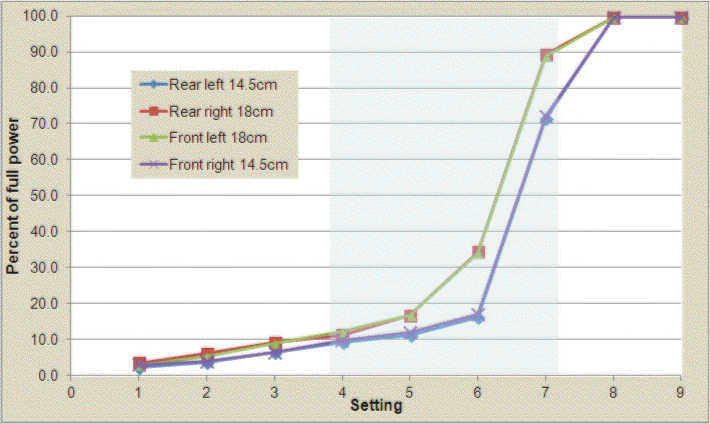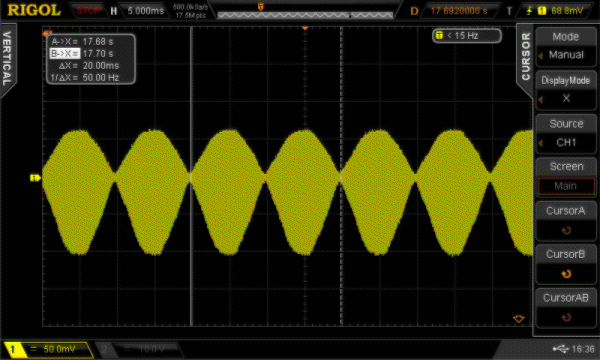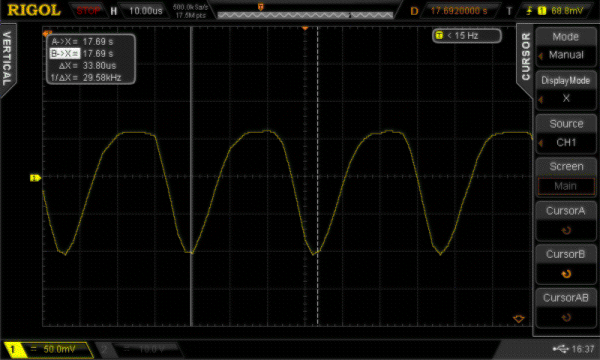Induction
hobs: spawn of the devil
Tim Williams
7th
June 2022
Recently,
we moved house, into another property whose kitchen was fitted with
an in-built induction hob. As you may have gathered from the title, I
don't like it. These notes will try and describe why.
First,
I should say that I've always up to now cooked on gas and so the
transition to an electric hob was going to be traumatic. But there
are some particular aspects of the hob which we now have that
exacerbate this.
It's
a Beko HNI64401AT. I had no choice in this, it was in the house
already, but reviews I've seen of this model don't appear to be all
that bad. Plus, it doesn't seem to have been heavily used previously,
and I have no reason to suspect it's faulty. But most, if not all, of
what follows will be applicable to any make of this type of hob.
The
reasons against can be headlined as follows:
Inconvenience
of operation
Refusal
to work with many pans
Uncontrollability
of heat
Inconvenience
With
a gas hob, you have two particular advantages: each burner is
controlled by a knob which gives a continuous, volume-control-like
setting; and you can see by looking at the flame just how much heat
you are getting, and turning the knob changes this immediately.
With
the induction hob, you don't have any of this. It's a flat, black
plate of glass with markers on it where you should put the pans;
there's no knob, you have to use a touch panel for all operations.
There is no way of seeing immediately how much heat is going in, and
you can't instantly turn the heat up or down. Instead, you must
identify which point on the touch panel refers to the ring you want
to adjust, select it, then touch another point on the panel to
increase or reduce the heat in steps (1-9, see later). And when I say
"touch", this is misleading; the touch points usually don't
respond immediately and you need to hold your finger on the point for
a while before anything happens. So, it is nothing like as easy to
control as a knob for each ring.
Placing
anything on the surface of the glass is fraught with hazard. If by
chance you cover the touch panel with anything metallic it will
squeal at you till you remove it. The glass itself is susceptible;
the instructions have numerous warnings, among which are
DANGER: Do not allow any
object to drop on the hob. Even small objects such as a saltshaker
may damage the hob. Do not use cracked hobs. Water may leak through
these cracks and cause short circuit. In case of any kind of damage
on the surface (eg., visible cracks) switch off the product
immediately to minimize the risk of electric shock…. Always
keep the control panel clean and dry. Having damp and soiled surface
may cause problems in the functions…. The surface might get
damaged by some detergents or cleaning materials. Do not use
aggressive detergents, cleaning powders/creams or any sharp objects
during cleaning… If the surface of the touch control panel is
exposed to intense vapor, entire control system nay become
deactivated and give error signal….Sugar-based foods such as
thick cream and syrup must be cleaned promptly without waiting the
surface to cool down. Otherwise, glass ceramic surface may be damaged
permanently.
What
conventional hob is so finicky? After all, when not in use the glass
is a big flat surface which invites you to stand things on it, and in
a small kitchen with few other work surfaces, that's almost a
necessity. And, you don't dare slide a pan from one point to another
on the surface, for fear of scratching it. You must keep a pan
centralised on a ring which suits its size, otherwise it doesn't want
to work. And this leads me on to…
Snootiness
about pans
When
we moved to this house we had a large collection of cooking pots and
pans, all of which worked with the gas hob. Many of them were
stainless steel, some were aluminium.
Of
all of these, the only ones which actually caused this induction hob
to function were a set of Le Creuset cast iron enamelled pans –
which are magnificent, but which we hardly ever used before because
they're so heavy – and a steel egg poacher. Nothing else would
work. The device would simply not recognise that it had a pan sitting
on it, and would refuse to even contemplate providing any heat. We
have had to invest in a new set of "induction-ready" pans
to avoid the threat of wrist injury from the Le Creusets, and to be
able to consider such straightforward jobs as frying an egg.
But
even with the new pans, the hob is still unable to function with a
pan which is too small or too large for its rings. There are only two
sizes of ring, 18cm (large) and 14.5cm (small). Try to use the wrong
size pan for each ring, or move it too far away from its allotted
position, it won't be recognised and the controller will barf.
To
be fair, all of this is stated in the user instructions:
In induction cooking, only
the area covered by the vessel on the relevant cooking zone is
energised. The vessel's bottom is recognised by the system and only
this area is heated automatically. Cooking stops if the cooking
vessel is lifted from the cooking zone during cooking. … For
induction hobs, use only vessels suitable for induction cooking. …
Only ferromagnetic pans can be used for induction cooking.
Ferromagnetic materials include: Enameled steel, cast iron, stainless
steel designed for induction cooking. Non-ferromagnetic materials
include: These types of pans will not work with induction cooking:
Stainless steel, glass, ceramic, copper or aluminium pans. …
Use flat bottomed saucepans or vessels only. … The diameter of
pan's ferromagnetic area should match the size of the cooking zone.
If the pan is not detected by the cooking zone, try it on the next
smaller cooking zone. … Operating a cooking zone without a
vessel or saucepan on it will cause damage to the product. Turn off
the cooking zones after the cooking is complete.
Uncontrollability
Let's
say you've got the right pan, you've put it on the right zone, and
you have negotiated the touch panel to select a cooking level. The
cooking heat can be selected in steps, from 0 (off) through 1, 2, 3
etc. to 9 (full on). You would think, wouldn't you, that this would
apply the power to the bottom of the pan in increments of 10% from
zero to full, no?
You'd
be wrong.
The
user instructions merely state
Touch "+" or "-"
keys to set the temperature level between "1" and "9"
or "9" and "1"
implying
a semi-continuous increase of heat as you go up the scale. In fact,
the heating control is anything but semi-continuous in steps of 10%.
To find out what is actually happening, I have measured the
application of the induction field (with an oscilloscope connected to
a near field probe next to each ring while it's operating with a
saucepan full of water) at each level setting on each ring. This
shows the following features:
the
field is applied on an on-off basis with the effective heating being
controlled by duty cycle variation – what in engineering terms
would be called "pulse width modulation". You can easily
tell this just by listening to the hum generated when the field is
on, and the obtrusive clicking noise every time it switches on. The
figure of “percent of full power” below is taken by
dividing the on time duration by the duty cycle period.
There
are two periods over which the duty cycle variation is applied,
12.28 seconds or 4.1 seconds. Which period is used depends on the
setting; settings 4-7, shown with a blue shading below, have a 4.1
second period, the rest have 12.28 seconds.
There
is no difference between setting 8 and 9; they are both full power,
with just a 60ms break every 12.28 seconds.
The
settings up to 7 are non-linear. The actual duty cycle variation,
translated into percent of full power, is shown in the graph below.
The lower levels, up to 3, use the 12.28 second period, i.e. a short
period of full power is applied every 12.28 seconds; the higher
levels from 4 to 7 use the 4.1 second period.

Notice
particularly the reduced levels of energy as a percentage of full
power below setting 6; and even more particularly, the massive jump
between 6 and 7. This translates into a cooking regime, as
experienced every time I use this thing, of either "boiling too
fast" (anywhere from 7 to 9) or "not boiling at all "
(anywhere from 6 to 1). There is no happy middle ground of about
half-power, on any ring. This is why I regard the machine as
"uncontrollable".
Controlling
heating by this method of duty-cycle control is widely used for all
manner of appliances, and of itself is not bad practice. A duty cycle
of several seconds, though, relies on the thermal time constant of
the heated object in order to give an approximately steady input of
heat. It's evident from experience that the thermal time constant of
typical cooking pans is less than several seconds,with the result
that the boiling at settings of 6 or 7 occurs in spasms. This is
stated in the user instructions:
On levels from 1 to 7, the
water or oil in the pot may boil or stop. This may lead the user to
think that the product turns on and off intermittently. This case,
which is observed especially when water or oil is little, is not a
failure; it is just the way the product operates.
Technicalities
The
frequency of the induction field used in this model is around 30kHz.
It's not a smooth or sinusoidal 30kHz, though; the waveform seen at
full power on one of the rings is shown below, at two timebase
settings. From this you can see that the 30kHz is quite distorted,
and is modulated by a full-wave-rectified 100Hz period, from an
unsmoothed mains supply. It doesn't need to be any smarter than this
to achieve heating, and the fact is that leaving it this way allows
the lowest cost circuitry for actually generating the field. On/off
control of each zone, detection of the presence of a pan, and
interfacing with the touch control can all be easily and cheaply
achieved with software in a small microcontroller. The total
electronics "under the bonnet" would not need to be
sophisticated or expensive.

(a) 100Hz modulated 5ms/division

(b) 30kHz waveform, 10us/division
Conclusion
As
said at the beginning, I have no reason to believe that the product
is faulty: it appears to be working entirely in accordance with what
the user instructions say (and, for that matter, don't say). As
someone who has had a lifetime's experience cooking on gas, I was
interested to see how different an induction hob would be. The
answer: it's very different; if you're a gas user and you want to
keep your sanity in the kitchen, do not under any circumstances
invest in an induction hob. You have been warned.


